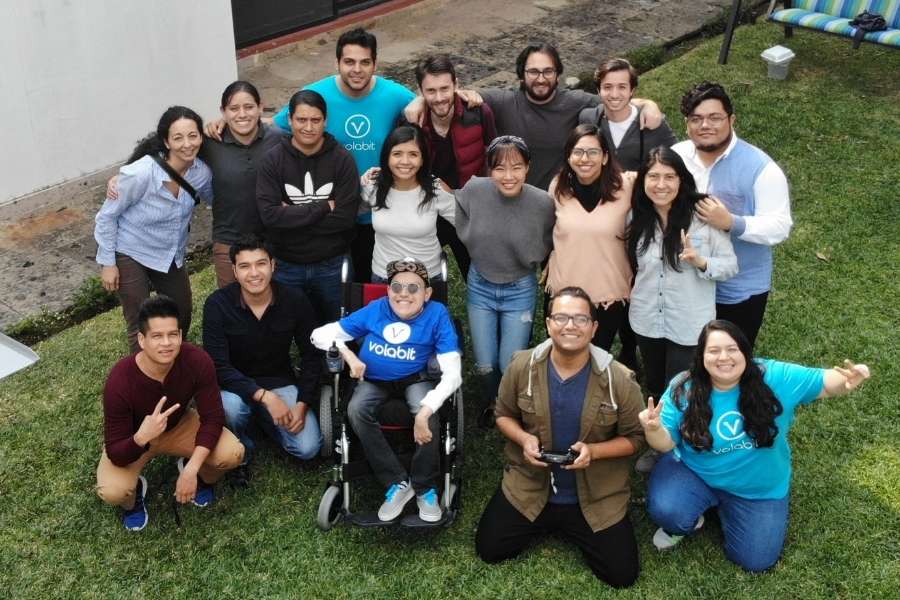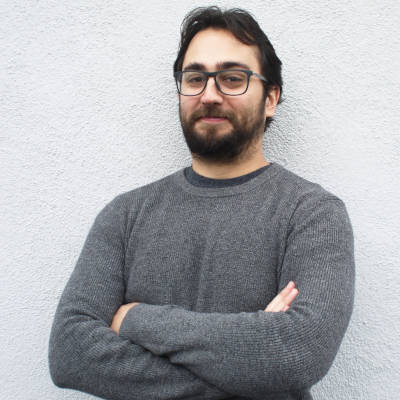Alumni Spotlight - History Makers: Alumniii Transform Mexico's Finance Industry
Two strangers’ paths converged at Carnegie Mellon University’s Integrated Innovation Institute in August 2012, a convergence that would not only change their lives but also the fabric of a society.
Hannah Kim wanted to learn an interdisciplinary approach to product development. Tomas Alvarez was keen to sharpen his business acumen following a shuttered entrepreneurial endeavor.
The Institute’s Master of Product Development degree program (now the Master of Integrated Innovation for Products & Services) fit both their needs and helped to catalyze their partnership.
In the decade that has since followed, Kim and Alvarez have co-founded two first-to-market startups in Mexico: Volabit was the country’s first cryptocurrency exchange platform, and Mifiel was first to offer electronic signatures for financial transactions, upending and transforming how an entire country conducts business.
Neither company was the original idea though. Each surfaced as a solution to a problem.
“Graduation comes, and everyone’s applying for jobs,” Alvarez recalled. “I’m having a harder time because I’m a Mexican national on OPT, which makes it tricky. So, while I’m job hunting, I have an idea for a Bitcoin-related product, which I’d been eyeing for a few years.”
Alvarez asked Kim to help with design, and they prototyped a minimum viable product (MVP) to launch. It attracted a lot of sign-ups, one of which belonged to the founder of a Silicon Valley accelerator who invited them to apply to the accelerator's next program.
“This was 2013 just after we graduated. The cryptocurrency space was nascent so there was nothing other than Coinbase. It was such an exciting time to get into that space, however, I was a little bit more risk averse. I had just started my job and was more reticent to let it go,” Kim said.
Initially, Kim participated in the accelerator in her free time outside of work; the experience compelled her to go all-in: She resigned and moved to Silicon Valley to focus on developing their remittance business idea.
“The remittance space – one side in Mexico and one side in the US – was a hot topic in the crypto space that everybody wanted to crack. We talked to immigrants that use traditional revenue services like Western Union, and we realized that the pain point didn’t exist at the user level so that brought us back to the drawing board,” Kim said.
Mentors at the accelerator suggested that they consider a service like Coinbase for Mexico.
“A critical difference was with remittance, we were trying to push on the market a product that may or may not have been needed. A platform to access Bitcoin or cryptocurrencies was a need that was already there though,” Kim said.
Volabit was launched in 2014, three years before interest in Bitcoin took off in Mexico.
“We realized that even though there was a need for buying and selling crypto in the Mexican market, the problem wasn’t particularly interesting for us to solve because most of the need was coming from people who wanted to speculate, who liked the volatility of cryptocurrencies,” Kim said.
Being a Fintech company, they connected with a lot of other financial institutions and noticed a problem in the market: One could not sign documents electronically in Mexico.
“This was important and an especially poignant pain point because a lot of regulatory issues required us to collect signatures from our users. We’re a technology company; we don’t want to create the barrier of collecting wet-ink signatures,” Kim said.
The team dove into this problem space, researching why companies like DocuSign were not being adopted. The reason? Mexico’s legal and financial processes required a more robust, fundamentally different product.
For instance, unlike the US, Mexico issues an electronic ID at the federal level, which is composed of a private and public key. If one signs with their private key, anyone can get the public key from the government’s database to verify identity.
“When you publish a Bitcoin transaction, you sign it with your private key, and the network checks if the public key matches. And, if so, you can trade Bitcoins. The technology is similar; it’s asymmetric cryptography,” Alvarez explained.
“Mifiel was born out of our need and built for our customers,” Alvarez said.
A tweet about this new product fortuitously showed on the right person's feed; the lawyer who had helped the Mexican government draft the law on electronic signatures responded to Alvarez’s tweet.
The team had created the closest solution to what he had envisioned in the law, and he wanted them to push the product.
Mifiel became its own entity and the primary focus of the team. Volabit still operates since it generates cash flow and fulfills a market need.
“We have a soft spot for Volabit because it was our first product but also because it's kind of been the giving tree for Mifiel. Starting Mifiel and introducing a SAAS product in a hostile market like Mexico, where there were no SAAS services to speak of when we launched, was a multi-year process. Without the support that both investment and Volabit’s revenue gave us, we wouldn't be where we are today,” Kim said.
“Mifiel offered us a lifeline of a product way more interesting for us, as product people, to build because it provides a multitude of interesting, untapped problems to discover and solve,” Alvarez said. “The good thing is that on a technological level, the signatures on blockchain are very similar so we just repurposed it. It wasn’t building a product from scratch. We had the knowledge and expertise within our team to do it.”
Mexico’s financial system is based on Letters of Credit, which are unique, physical, and transferable – akin to endorsing a check. The pandemic, though, interrupted the ability to process transactions this way, which spiked interest in Mifiel.
“The problem when you have digital documents is that there’s no one copy that is the original. It would be easy for fraudulent transactions to happen because you can’t trace who has ownership and which one is the only copy,” Kim said. “That’s where we brought in blockchain. It’s perfect – that’s literally what the blockchain is designed to solve.”
Whereas an NFT (non-fungible token) has no innate value, a digital Letter of Credit from Mifiel is the exact opposite: It has a concrete, tangible value.
Thanks to Latin America’s FinTech boom, US investment banks are buying debt from Mexico’s companies and using Mifiel for those transactions.
“Essentially, they’re buying ‘NFTs’ that we craft for them. So, now in their balance sheets, they have Mifiel files, which is awesome when you think about it,” Alvarez said.
Mifiel officially launched in 2016 and, like Volabit, was early to market. The company now employs more than 20 people and counting.

Kim and Alvarez have been conservative with hiring, cautious and mindful that growing recklessly without consideration to culture could break what they’ve built.
They also understand, though, that they cannot grow Mifiel’s product adoption and usage within the Mexican market without hiring more talent - a necessity given that Mifiel’s services are becoming the preferred way to fund debt in Mexico.
“Mexico doesn't like change. We have a saying here: ‘Más vale mal por conocido que bueno por conocer,’ which translates to, ‘A known evil is better than an unknown good.’ That's the mindset of most business stakeholders we've come across when selling Mifiel,” Alvarez said.
“It’s very rewarding to see how you can change the fabric of a system built by a society that doesn't like to change. Several years ago, everyone thought we were crazy to try to digitize,” Alvarez said. “And, now, even the most traditional institutions are using our products.”
Learnings Along The Way
ADVICE for students
Hannah's Thoughts
This is a personal regret: I didn't fully take advantage of the wealth of resources that CMU has to offer, especially in its expertise in design, engineering, and computer science.
Fully tap into the expertise of the professors, your peers, and the alumni, explore courses and extracurriculars, and go outside of your comfort zone because (a) once you graduate from school, you don't have that much of an opportunity to be exposed to those kind of environments --- or even to have time to explore those topics --- so it's a unique time when you can take advantage of that and then (b) it's the only time when you can play, explore, and discover what you like, which develops creative confidence.
CMU has such specific areas of expertise that you can really get so much out of your education. But, unless you're proactive about it, you can pass the experience just going to classes and hanging out with your friends. Then it'll be too late when you realize you can't go back and take advantage of that.
Tomas' Take
Your professors are really important because you can dive into something interesting with them. So something that really helped us was we developed a close relationship with one of the faculty.
Stuart Evans had expertise that we needed so we asked him to advise our independent study. We were interested in entrepreneurship, so it made sense to talk to him. When we were knocking on doors in San Francisco to get funding, a lot of what Stuart taught us made a difference.
We wouldn’t have learned that from just class. So, without him, it would not have been possible. He made a tangible impact on our entrepreneurial dream because he taught us a lot of things that were practical, applicable, and stayed with us.
You have all these human resources at CMU that you can tap into. You don't get those kinds of opportunities after you graduate.
Lessons learned
Start with the problem - not the technology
A lot of us have this innate tendency to want to tackle problems with solutions before we fully understand them. So there's a disconnect between what we know and what we learned at a conscious level and how we are automatically wired to behave. Despite both of us being from a design thinking background and being aware of the need and the value of talking to customers, it’s something that we still struggle with on a daily basis and try to incorporate more consciously.
So understand the problem and talk to your users before you validate the problem and definitely before you build anything.
Focus on problems that excite you
If you aren't interested in the problem that you're solving, it’s too easy to give up and too easy to run into roadblocks that you feel you cannot overcome. The interest has to be both at a product level and in running the company itself. For that, find what is rewarding to you --- such as building the team --- and lean into that because otherwise it's too difficult to go from one day to the next, especially in the early years.
You cannot succeed by yourself
One of the critical execution errors that we've had is we don't dedicate enough time and effort to hiring so it's something that we are fixing now. We’re product people so we want to dedicate any time --- and all the time that we have --- to product, which has been at the expense of other facets of the business.
We were not very diligent about bringing in people with different expertise that complements our own early on. Once we started hiring more senior people with niche experiences, that made a lot of difference. It’s an important lesson that we've learned, and it taught us humility. We can't do everything.




